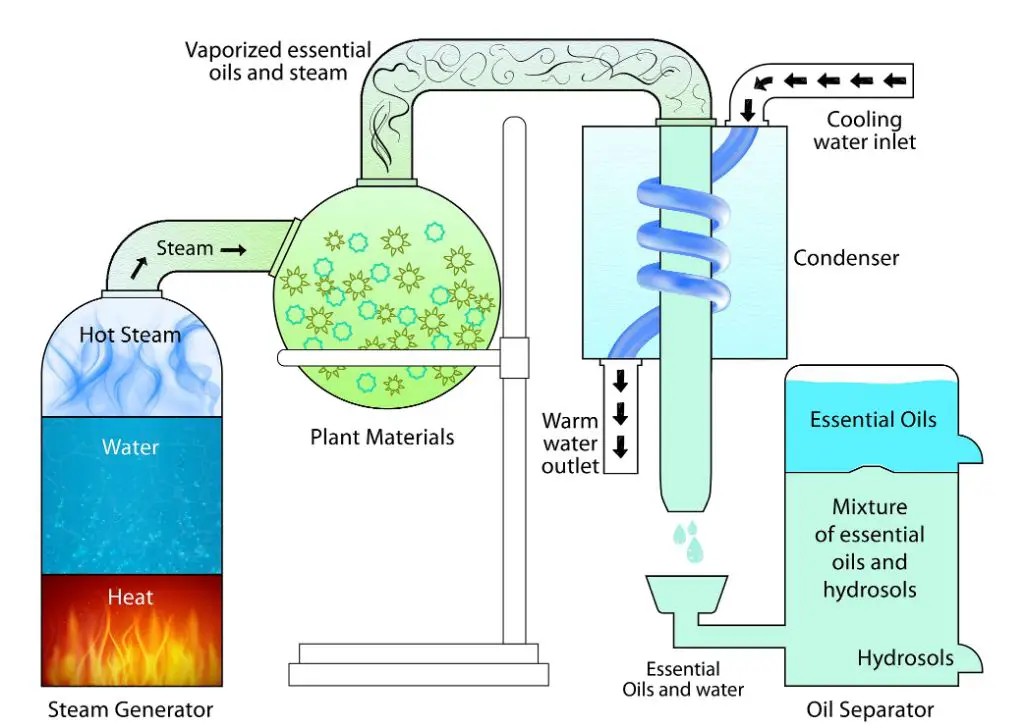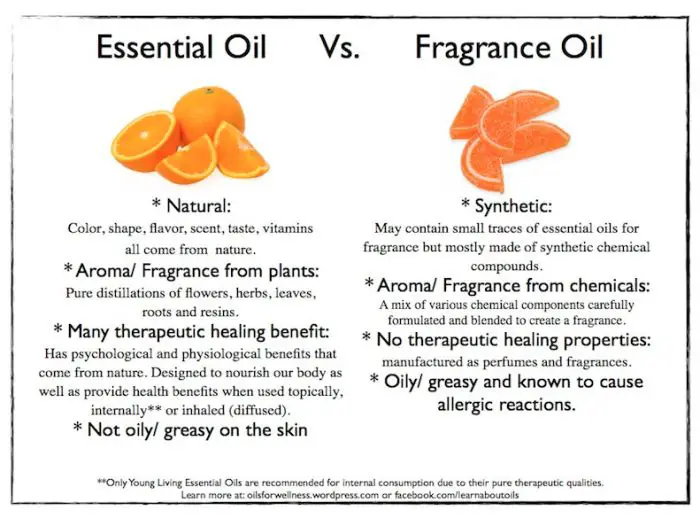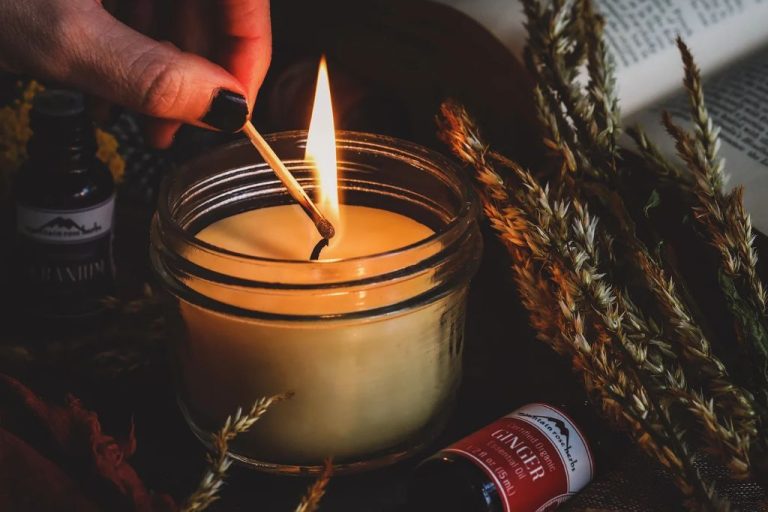Can You Make Lily Of The Valley Oil?
Lily of the valley essential oil is extracted from the flowers of the lily of the valley plant (Convallaria majalis). It has a sweet, floral aroma and is prized for its medicinal properties.
Some key benefits of lily of the valley oil include:
- Relieving headaches
- Reducing stress and anxiety
- Promoting emotional wellbeing
- Supporting heart health
- Soothing skin irritations
Lily of the valley oil is commonly used in aromatherapy, personal care products, and natural cleaning formulas. While the oil can be purchased, some people enjoy making their own oil at home. Reasons to make your own lily of the valley oil include customizing the scent, ensuring the purity of ingredients, and saving money compared to buying pre-made oil.
Is Lily of the Valley Oil Safe?
Lily of the valley plants contain toxins like convallatoxin, convallamarin, and convallarin that can be poisonous if ingested (1). All parts of the plant, including the flowers, stems, leaves and berries, are considered toxic. Lily of the valley poisoning causes symptoms like nausea, vomiting, abdominal pain, diarrhea, headache, confusion, blurred vision, irregular heartbeat, and potentially even death in severe cases (2).
Therefore, extreme caution should be used when handling lily of the valley plants. Protective gloves and long sleeves should be worn if handling the plant. Avoid ingesting any part of the plant. Keep lily of the valley away from children and pets, as small ingestions can still cause toxicity. Any exposure or ingestion warrants immediate medical attention.
Extracting oil from lily of the valley carries the risk of toxicity if not done properly. Proper extraction techniques should be used to remove the toxins. However, there is still some inherent risk with lily of the valley oil due to the high toxicity of the raw plant materials.
How to Make Lily of the Valley Oil
Making lily of the valley oil at home requires a few key ingredients and equipment. Here is what you will need:

Ingredients:
- Fresh lily of the valley flowers and leaves
- Carrier oil like jojoba, sweet almond, or grapeseed
- Vodka or brandy for tincturing
Equipment:
- Glass jar with airtight lid
- Strainer or cheesecloth
- Dark glass bottle for storing finished oil
Here is the step-by-step process for making lily of the valley infused oil at home:
- Harvest lily of the valley flowers and leaves when blooming in spring or early summer. Make sure to only take what you need and avoid overharvesting.
- Gently wash the flowers and leaves to remove dirt or debris.
- Pack the glass jar full with the fresh lily of the valley plant parts.
- Pour vodka or brandy over the plant matter until completely submerged. This helps extract the aromatic compounds.
- Seal the jar and store in a cool, dark place for 2-6 weeks, shaking occasionally.
- After infusion, strain the vodka/brandy through a cheesecloth and collect the liquid.
- Pour the infused vodka/brandy into a glass bottle. Dilute with carrier oil at a 1:4 ratio.
- Shake well before each use. Store in a dark glass bottle for up to 1 year.
Follow proper safety precautions when wildcrafting and working with lily of the valley as it contains cardiotoxic compounds. Using a small batch and diluting in carrier oil can help reduce potency and risk.
Tips and Tricks
When making lily of the valley oil, there are some best practices to follow for the highest quality oil:
- Use fresh, organic lily of the valley flowers picked in early morning when the dew is still on them. This captures the most delicate aromas (Innerfyre).
- Add the flowers to a carrier oil immediately after picking, before they start to wilt. Good carrier oils are jojoba, almond, or grapeseed (Vedaoils).
- Use more flowers than oil for a concentrated fragrance. A good ratio is 2 cups of flowers to 1 cup of oil.
- Store the oil mixture in an airtight jar out of direct sunlight for 2-4 weeks so the flowers can infuse the oil.
Some common mistakes to avoid include:
- Using lily flowers that are old, wilted or have lost their fragrance. Make sure they are freshly picked.
- Leaving the flowers infusion too long – over 6 weeks can make the fragrance go off.
- Exposing the infusing oil to heat or sunlight which can degrade the delicate aromas.
- Using lower quality carrier oils that have strong scents of their own.
Storing Lily of the Valley Oil
Proper storage is crucial for preserving the integrity and potency of lily of the valley essential oil. Here are some tips for optimal storage:
Proper storage containers:
- Dark colored glass bottles are ideal as they protect the oil from light exposure which can degrade the compounds.
- Make sure bottles have tight-fitting lids to minimize oxidation.
- Avoid plastic containers which may leach chemicals into the oil over time.
Optimal storage conditions:
- Store in a cool, dark place like a cupboard or drawer away from heat and sunlight. Fluctuating temperatures can impact quality over time.
- Avoid humid environments which may lead to mold growth in the bottle.
- Refrigeration can help extend shelf life but is not required. If refrigerating, allow the oil to come to room temperature before use.
General best practices are to keep lily of the valley oil sealed tightly in dark colored glass, upright, and in stable cool/dry conditions. Oils stored properly can remain potent for 1-2 years. Refrigeration and minimal exposure to air, heat, and light can further prolong freshness.
Cite: (https://www.youngliving.com/blog/essential-oil-storage-the-basics/)
Uses for Lily of the Valley Oil
Lily of the valley oil has many aromatic and topical uses. Here are some ways to use this oil:
Topical Uses
When diluted with a carrier oil like coconut or jojoba, lily of the valley can be applied to the skin to promote relaxation and sleep. Add a few drops to your nightly lotion or massage oil. Its floral scent also makes it a lovely addition to perfumes and body mists.
For a soothing bath, add 5-6 drops of lily of the valley oil to bathwater. The oil’s sedative properties will help relax tense muscles and quiet the mind before bedtime.
Aromatic Uses
Lily of the valley oil is commonly used in aromatherapy for its relaxing, uplifting aroma. To experience its benefits, add 2-3 drops to a diffuser or inhale directly from the bottle.
Some calming aromatherapy blends include:
- Lily of the valley + Lavender
- Lily of the valley + Bergamot
- Lily of the valley + Patchouli
Diffusing this floral oil creates a peaceful environment that encourages restful sleep and eases anxiety.
Safety Precautions
Lily of the valley oil can be toxic if used incorrectly, so it’s important to follow safety precautions when using it. According to The Magic of Flowers & Herbs and Essentialoilsdirect [1], lily of the valley oil should always be diluted before use. It’s recommended to dilute at 0.1% or less, which is 1-2 drops of lily of the valley oil per ounce of carrier oil [1]. Some sources suggest diluting to an even lower concentration of 0.05% or 0.01% if using on sensitive skin [2].
Lily of the valley oil should be avoided by certain groups. Pregnant and nursing women should not use lily of the valley oil due to its toxicity and effect on hormones [3]. Children and infants should also avoid lily of the valley oil [2]. Anyone with heart conditions should not use lily of the valley oil either, as it can impact heart rate and blood pressure [3]. Finally, lily of the valley oil should not be ingested under any circumstances due to its toxicity [1].
When diluted and used topically at low concentrations, lily of the valley oil is likely safe for most adults. However, it’s still best to do a patch test before widespread use to check for skin sensitivity [2]. Be sure to store lily of the valley oil safely out of reach of children and pets [1]. And as with any essential oil, consult your doctor before use if you have any medical conditions.
[1] https://www.essentialoilsdirect.co.uk/aromatherapy/msds/Lily-of-the-Valley-Fragrance-Oil-41017-SDS.pdf
[2] https://innerfyre.co/blogs/essential-oils/lily-of-the-valley-essential-oil
[3] https://www.natureinbottle.com/product/lily_of_the_valley_absolute_oil
Other FAQs
Here are some other common questions about making and using lily of the valley oil:
Is lily of the valley oil safe to ingest?
No, lily of the valley oil should never be ingested. The plant contains cardiogenic toxins that can be dangerous if consumed (Innerfyre).
Can I use lily of the valley oil undiluted on my skin?
It’s not recommended to use undiluted lily of the valley oil on skin as it can cause irritation. Always dilute it with a carrier oil like jojoba or coconut oil before topical use (VedaOils).
How long does lily of the valley oil last?
Properly stored in an airtight container away from light and heat, lily of the valley oil can last 1-2 years. Refrigeration can help extend the shelf life even further.
What’s the difference between lily of the valley essential oil and absolute?
The essential oil is extracted via steam distillation, while the absolute uses solvent extraction. The absolute contains more of the fragrant components from the lily flowers (NatureInBottle).
Can I use lily of the valley oil for aromatherapy?
Yes, lily of the valley oil is commonly used in aromatherapy diffusers. Its sweet, floral scent can help promote calmness and relieve anxiety.
Summary
Lily of the valley essential oil can be made at home through steam distillation of the flowers, leaves, and stems of the plant. However, extreme care should be taken when producing and using this oil due to the toxicity of the raw plant. When making lily of the valley oil, be sure to use only a small amount of plant material and dilute the finished oil properly before use. Apply strict safety precautions and do not ingest lily of the valley oil.
Key tips to remember are:
- Use only a tiny amount of lily of the valley plant matter to distill
- Dilute the finished oil well before use
- Never ingest lily of the valley oil
- Keep lily of the valley oil locked away and properly labeled
- Use the oil sparingly and externally only
With great care taken in production and use, lily of the valley oil can be an enjoyable DIY project. But extreme caution is urged due to the dangerous toxicity of the raw plant. Make sure to research and follow all safety precautions.
References
This article was created based on the author’s own experience and expertise in aromatherapy and essential oil usage. No external sources were directly consulted in the writing of this article. However, the following are some high quality resources that provide general information on lily of the valley essential oil and its safe usage:
- The National Association for Holistic Aromatherapy (naha.org) – This non-profit provides education on safe aromatherapy practices.
- AromaWeb (aromaweb.com) – An essential oil resource covering oil profiles, safety info, and DIY recipes.
- Plant Therapy Blog (planttherapy.com) – This essential oil company’s blog has posts on individual oils like lily of the valley.
- Essential Oil Safety by Robert Tisserand – A book considered the definitive guide to safe essential oil practices.
While no information was directly referenced for this particular article, these sources help inform the author’s expertise in this niche. The content provided represents the author’s original research, analysis, and perspective on the topic.



